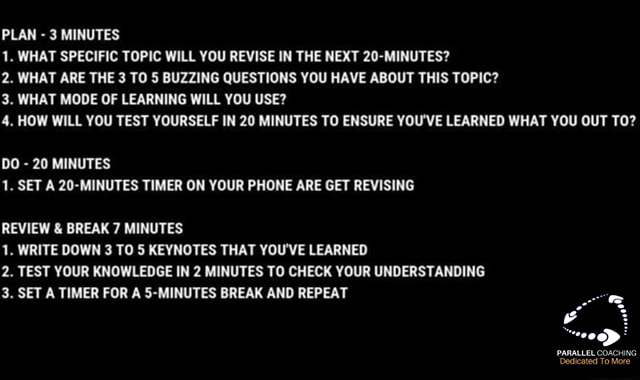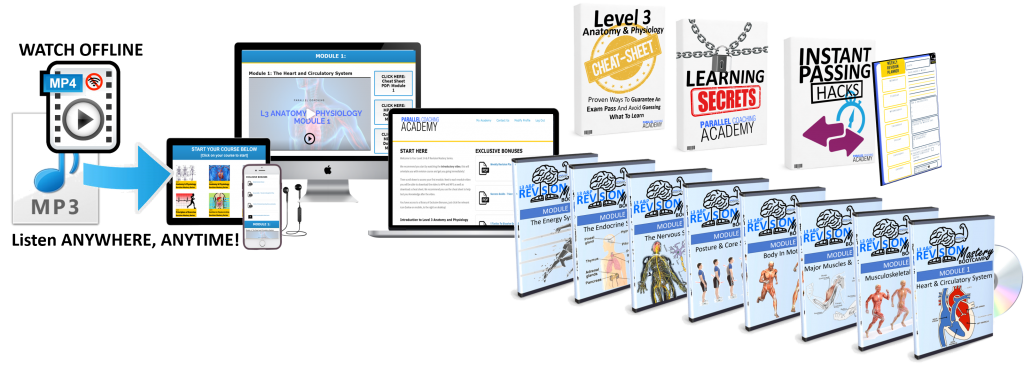Episode 011 Revision Podcast and A Deep Dive Into The Heart & Circulatory System
Here’s what we talked about on today’s FitPro Sessions Podcast
Today’s podcast episode is a revision Fit Pro session where Neale and I deep dive into the Heart & Circulatory System
We explain the function, the structure, and the three circulatory systems, as well as how this relates to training your client. Also, join us at the end for the revision power hour.
Click the PLAY button below to listen to the entire episode
Grab the FitPro Sessions Podcast show notes:
Timestamps:
1:00 Intro to Todays FitPro Session
2:00 How many questions will I get in my exam about Heart and Circulatory System?
4:30 How does learning the Heart & Circulatory System relate to training clients as a fitness professional?
6:00 The SAID Principle
10:30 Learning about all of the systems of the body
13:00 Understanding Anatomy so you can pass on your knowledge
14:50 Spaced repetition in revision
17:00 What are the three blood vessels in the body?
17:30 The three circulatory systems in the body
19:40 The function of the heart
20:40 Fun facts about the heart
23:00 Relating training approaches to the heart & circulatory system
28:00 The heart structure
29:50 Understanding heart valves
33:30 Arteries
36:00 Capillaries
38:00 Veins
41:10 What does the heart &Circulatory system do?
41:40 Relating the knowledge back to your clients
47:50 Start of the Revision Power Hour
The Revision Power Hour Cheat Sheet:

The Heart and Circulatory System
The circulatory system is composed of the heart and blood vessels, including arteries, veins, and capillaries.
THREE CIRCULATORY SYSTEMS
Our bodies actually have three circulatory systems: The pulmonary circulation is a short loop from the heart to the lungs and back again,
and the systemic circulation (the system we usually think of as our circulatory system) sends blood from the heart to all the other parts of our bodies and back again.
The third three is the coronay circulatory system… which serves the heart muscle itself.
FUNCTION
The heart is the key organ in the circulatory system. As a hollow, muscular pump, its main function is to propel blood throughout the body.
It usually beats from 60 to 100 times per minute, but can go much faster when necessary. It beats about 100,000 times a day, more than 30 million times per year, and about 2.5 billion times in a 70-year lifetime.
Fun fact 1: During the average lifetime, a heart pumps 1 million barrels of blood, enough to fill more than 3 super tankers.
Fun fact 2: The heart pumps about 100 gallons of blood through the body each hour – enough to fill 1,600 drinking glasses.
Fun fact 3: A newborn baby has about one cup of blood in circulation. An adult human has about four to five litres.
Fun fact 4: Blood takes about 20 seconds to circulate through the entire vascular system. Blood makes up 7 % of your body weight.
Fun fact 5: Every year, your heart beats approximately 35 million times. That is 100,000 beats per day and 70 beats per minute.
The heart gets messages from the body that tells it when to pump more or less blood depending on an individual’s needs.
Stick with that for a second…
HEART RELATING TO PLANNING
Depending on FITT – there is an acute change in the client’s HR.
This impacts our client’s enjoyment, feelings and adherence. This in turn impacts their goal outcome.
Must be a smart science-backed approach to planning and delivery of a session and periodized plan.
Conversely, when we’re sleeping, it pumps just enough to provide for the lower amounts of oxygen needed by our bodies at rest.
HEART STRUCTURE
The heart has four chambers that are enclosed by thick, muscular walls. It lies between the lungs and just to the left of the middle of the chest cavity.
The bottom part of the heart is divided into two chambers called the right and left ventricles, which pump blood out of the heart. A wall called the interventricular septum divides the ventricles.
The upper part of the heart is made up of the other two chambers of the heart, the right and left atria. The right and left atria receive the blood entering the heart.
A wall called the interatrial septum divides the right and left atria, which are separated from the ventricles by the atrioventricular valves.
The tricuspid valve separates the right atrium from the right ventricle, and the mitral or bicuspid valve separates the left atrium and the left ventricle.
Two other cardiac valves separate the ventricles and the large blood vessels that carry blood leaving the heart.
These are the pulmonary valve, which separates the right ventricle from the pulmonary artery leading to the lungs, and the aortic valve, which separates the left ventricle from the aorta, the body’s largest blood vessel.
ARTERIES
Arteries carry blood away from the heart. A for away.
They are the thickest blood vessels, with muscular walls that contract to keep the blood moving away from the heart and through the body.
In the systemic circulation, oxygen-rich blood is pumped from the heart into the aorta.
This huge artery curves up and back from the left ventricle, then heads down in front of the spinal column into the abdomen. Two coronary arteries branch off at the beginning of the aorta and divide into a network of smaller arteries that provide oxygen and nourishment to the muscles of the heart….
aka. Coronary artery.
Unlike the aorta, the body’s other main artery, the pulmonary artery, carries oxygen-poor blood. From the right ventricle, the pulmonary artery divides into right and left branches, on the way to the lungs where blood picks up oxygen.
As they get farther from the heart, the arteries branch out into arterioles, which are smaller and less elastic.
CAPILLARIES
Blood flowed from the arterioles into capillaries.
Though tiny, the capillaries are one of the most important parts of the circulatory system because it’s through them that nutrients and oxygen are delivered to the cells. In addition, waste products such as carbon dioxide are also removed by the capillaries.
A network of tiny capillaries connects the arteries and veins.
VEINS
Veins carry blood back to the heart. VeIN – has the word IN within it, so it is sending blood INTO the heart to be pumped
Veins are not as muscular as arteries, but they contain valves that prevent blood from flowing backward. Veins have the same three layers that arteries do, but are thinner and less flexible.
Capillaries lead into the smallest venules, then veins, then the two largest veins are the superior and inferior vena cavae.
The terms superior and inferior doesn’t mean that one vein is better than the other, but that they’re located above and below the heart.
What the Heart and Circulatory System Do
The circulatory system works closely with other systems in our bodies. It supplies oxygen and nutrients to our bodies by working with the respiratory system.
At the same time, the circulatory system helps carry waste and carbon dioxide out of the body.
Let’s go back to FRED
When he is running at higher intensities, the amount of CO2 and waste products Fred creates will be greater. This means that his breathing rate goes up, and his heart rate has to increase to get rid of all of the waste.
Similarly the intensity and duration that Fred is running will impact his Hormones — produced by the endocrine system
Our hormones are transported through the blood in the circulatory system. As the body’s chemical messengers, hormones transfer information and instructions from one set of cells to another. For example, one of the hormones produced by the heart helps control the kidneys’ release of salt from the body.
So when Fred is running he will sweat out salt and other electrolytes, and to help maintain homeostasis the kidneys release more salt.
Summary
It’s not just about the 8 question in your exam – more so,
How this A&P topic impacts you working safely and effectively clients in the future.
Heart & Circulatory System Mock Questions
Test your knowledge by answering these three mock questions: answers are at the bottom of the blog.
Q1: Which of the following blood vessels take blood away from the heart towards the working muscles
A. Veins
B. Capillaries
C. Arteries
D. Vena cavae
Q2: Which of the following is a name given to the circulatory system that carries blood to the heart muscle?
A. Systemic System
B. Pulmonary System
C. Coronary System
D. Somatic System
Q3: What is the function of the left ventricle?
A. Pump blood via the aorta to the working muscles
B. Pump blood via the Pulmonary Artery to the lungs
C. Collect blood from the lungs
D. Pump blood via the pulmonary artery to the working muscles
Test your knowledge, by reading the answers below.
Download More Mock Questions for FREE just link these by clicking this link: MOCK QUESTIONS

ANSWERS
Q1 = C
Q2 = C
Q3 = A
Need more help?
Discover How 6500+ Fitpros In Training Are Walking Into Their Exam With Confidence And Guaranteeing A Pass
You get a video and cheat sheet for each of the modules in your Anatomy and Physiology.
Are you tired of spending hours reading from a manual or clunky online learning that finds you clicking through slides leaving you understanding nothing?
Research shows that relying on this old way of learning isn’t enough to guarantee a pass, let alone feel confident walking into your Level 3 A&P exam.
The revision mastery Bootcamp takes your revision to the next level.
You will learn via structured video tutorials, cheat sheets and audio downloads… it’s just like having a 121 tutor on your phone or laptop, ANYWHERE, anytime.
Only this way, you won’t fall asleep whilst revising and you’ll actually learn to enjoy anatomy.
This is not another course with more exams – it HELPS pass the course you’re already enrolled on!
“EVERYTHING You Need To Learn, Revise And Pass Your Level 3 Anatomy & Physiology Exam”
If you want to get your revision structured, learn everything you need to know and feel confident on exam day, then click the link below:
https://revision.parallelcoaching.co.uk/l3ap-revision-mastery-bootcamp-13

See you on the inside
Dedicated to More
Hayley “Heart & Circulatory System” Bergman
Parallel Coaching
P.S. You can also find us on the following platforms:
Instagram: https://www.instagram.com/parallelcoaching
Facebook: https://www.facebook.com/ParallelCoaching
Twitter: https://twitter.com/ParallelCoach
YouTube: http://bit.ly/2F1Z1bs

